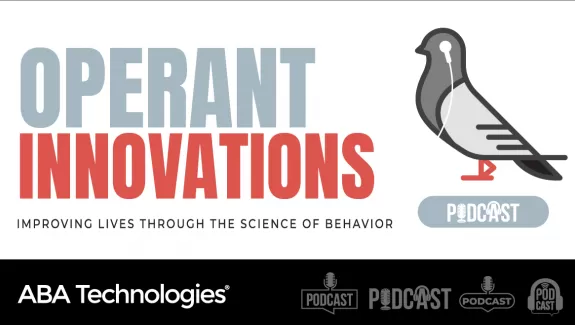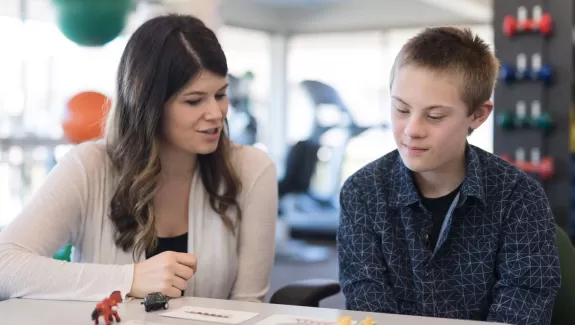
Operant Behavior and Snowflakes
 Sitting here at my desk on a cold, snowy morning watching the snowflakes gently descend to blanket the landscape outside my window (such descriptions reveal why I am a behavior analyst and not a poet), reminds me of the operant (another reminder, too, of why I am not a poet). The operant is one of our most important concepts. Operants are classes of responses that have a similar effect on the environment. That effect can be to operate something that allows their measurement (like a child’s block-stacking or a pigeon’s key peck) or to produce a reinforcer or punisher.
Sitting here at my desk on a cold, snowy morning watching the snowflakes gently descend to blanket the landscape outside my window (such descriptions reveal why I am a behavior analyst and not a poet), reminds me of the operant (another reminder, too, of why I am not a poet). The operant is one of our most important concepts. Operants are classes of responses that have a similar effect on the environment. That effect can be to operate something that allows their measurement (like a child’s block-stacking or a pigeon’s key peck) or to produce a reinforcer or punisher.
 Now, you may ask, what does an operant have to do with the snowstorm that is the impetus for this commentary? Well, just about everything. Everyone alive heard in elementary school science class that “no two snowflakes are alike.” It turns out, probabilistically speaking, that this probably isn’t true, but for all intents and purposes let’s say it is close enough to true for me to make the following point: like snowflakes, no two responses are identical. A child solves the same problem slightly differently when confronted with the problem on different occasions or in different settings. A pigeon’s pecks at a key are slightly different on each occasion. Slightly.
Now, you may ask, what does an operant have to do with the snowstorm that is the impetus for this commentary? Well, just about everything. Everyone alive heard in elementary school science class that “no two snowflakes are alike.” It turns out, probabilistically speaking, that this probably isn’t true, but for all intents and purposes let’s say it is close enough to true for me to make the following point: like snowflakes, no two responses are identical. A child solves the same problem slightly differently when confronted with the problem on different occasions or in different settings. A pigeon’s pecks at a key are slightly different on each occasion. Slightly.
 Confronted with this problem of slight differences in form of responses, Skinner proposed that psychology not consider the response to be its basic unit, but rather classes of responses that have the same effect on the environment, as noted in the first paragraph above. And with that proposal, the operant was born, in the 1930s.
Confronted with this problem of slight differences in form of responses, Skinner proposed that psychology not consider the response to be its basic unit, but rather classes of responses that have the same effect on the environment, as noted in the first paragraph above. And with that proposal, the operant was born, in the 1930s.
Skinner’s ideas about operants consolidated the idea of functional definitions of behavior. For example, widely different-appearing responses—complicated things like “attention-getting” or “avoidance”—can look very different from one another and yet be maintained by the same consequences—“getting my way”—and thus be more alike than different, even though they may look different.
 Functional definitions deriving from Skinner’s notion of the operant, then give us ways of deciding whether or not two responses are related to one another or not. If they are maintained in the same way by the same reinforcer, regardless of their physical form, then they are at least functionally similar. This, in turn, suggests that if we understand how to increase or decrease one member of the operant class, we have a big head start on managing the others. And if two responses “look just alike” but one is controlled by attention and one by negative reinforcement, then we can predict that changing the reinforcer for one will not affect the other.
Functional definitions deriving from Skinner’s notion of the operant, then give us ways of deciding whether or not two responses are related to one another or not. If they are maintained in the same way by the same reinforcer, regardless of their physical form, then they are at least functionally similar. This, in turn, suggests that if we understand how to increase or decrease one member of the operant class, we have a big head start on managing the others. And if two responses “look just alike” but one is controlled by attention and one by negative reinforcement, then we can predict that changing the reinforcer for one will not affect the other.
I often draw looks of skepticism when I first tell my students that if I present a pigeon with a red light and green light and its behavior is the same to both, then the two stimuli are, as far as the pigeon is concerned, the same. But when I put this in the context of the above considerations, the students can begin to discriminate formal or structural definitions (in terms of the properties of “red” and “green”) from the functional control (similar responding to red and green) exerted by the stimuli on behavior. Like the red and green light to the pigeon, all the snowflakes coming down outside my window are functionally similar to me because they control the same response: “beautiful.”


